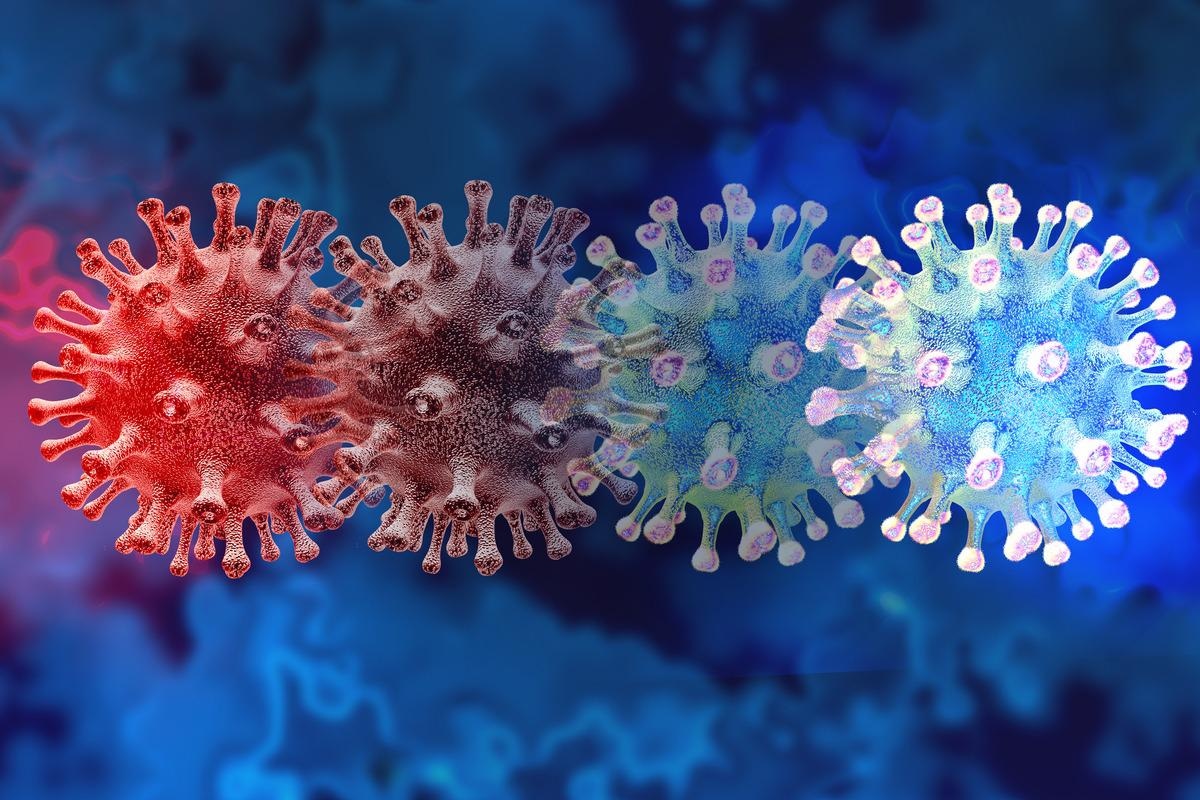A recent review paper, published in the Journal of Infection and Public Health, highlights principal host factors that may explain the immune responses to the severe acute respiratory syndrome coronavirus 2 (SARS-CoV-2) and its variants in the context of infection susceptibility, disease severity, and previous immunity.
 Study: Immune response to SARS-CoV-2 variants: A focus on severity, susceptibility, and preexisting immunity. Image Credit: Lightspring/Shutterstock
Study: Immune response to SARS-CoV-2 variants: A focus on severity, susceptibility, and preexisting immunity. Image Credit: Lightspring/Shutterstock
Background
Thus far, the ongoing coronavirus disease 2019 (COVID-19) pandemic has shown us that an estimated 15% of all confirmed disease cases progress to severe clinical presentation, with notably higher incidence among older individuals.
More specifically, in patients with COVID-19, there are several co-occurring mechanisms of innate and adaptive immunity (such as dysregulation, dysfunction and over-activation) that are thought to lead to severe pneumonia, which means we can consider it an immune-mediated disease.
There is one specific phenomenon known as the cytokine storm (characterized by immune-cell hyperactivation and increased levels of circulating cytokines) which is thought to be responsible for the majority of severe forms of SARS-CoV-2 infection.
Consequently, a recent review paper highlighted important findings on the major immune components involved in COVID-19, as well as their contribution to the severity of the disease.
By providing a comprehensive synthesis of evidence since the start of the pandemic, the authors have also shed light on manifold variants of SARS-CoV-2 and the possible role of cross-reactivity in the pathogenesis of the disease.
Major immune components implicated in COVID-19
Immune responses to SARS-CoV-2 initially occur by the innate immune response via the interferon (IFN)-mediated pathways, but there is also a significant role regarding the adaptive immunity via the T lymphocyte and the antibody-mediated pathways.
This means that the ability of the original SARS-CoV-2 strain (but also novel emerging variants) to antagonize IFN-mediated antiviral responses can be a reason for a rather high early viral load, increased transmissibility, but also milder symptoms when compared to severe acute respiratory syndrome coronavirus (SARS-CoV), the original SARS virus.
These can be viewed as a part of the continued clinical evolution of COVID-19. Furthermore, SARS-COV-2 antigenic mimicry with different human tissue has recently received plenty of attention in the research world.
In addition, sensitivity to SARS-CoV-2 can be cumbersome to define and/or predict due to generally unknown pre-existing cross-protective immunity in individuals exposed to genetically related pathogens, including seasonal coronaviruses.
Variants of concern and our immune response
In order to gain the ability to evade either natural or vaccine-induced immune responses, the virus needs to amass several mutations in its spike glycoprotein to be able to overcome the polyclonal immune response that targets many different portions of this protein.
Since its initial emergence, several notable variants of SARS-CoV-2 have been circulating widely around the world. Of those, variants that have the potential to elude natural or vaccine-mediated immunity are known as variants of concern (VOC).
It is important to emphasize that lack of neutralization does not essentially imply a lack of protection from antibodies steered against the disease; albeit important, they are not the only immune constituent in the fight against SARS-CoV-2.
Furthermore, we must take T cell responses into consideration when discussing immunity towards newly emerging variants, as this is unlikely to change regardless of the mutations in any new variants.
Implications for future studies
Notwithstanding the increasing number of studies tackling relevant immunologic aspects of SARS-CoV-2 infection, more research is needed in order to help with predicting the progression of the infection from asymptomatic to critical phenotypes.
“The increased virus infections provide the basis for SARS-CoV-2 to mutate and better evade host immunity, which has led to new variants showing higher transmissibility rates”, say study authors of this paper. “Any future global immunization program will need to cover immunity against new coronavirus variants to ensure the effectiveness of these vaccination programs”, they add.
Therefore, further research endeavors have to be conducted in order the appraise transmission patterns, virulence and antigenicity of the variants of concern, as well as its association to the COVID-19 heterogeneous phenotypes.